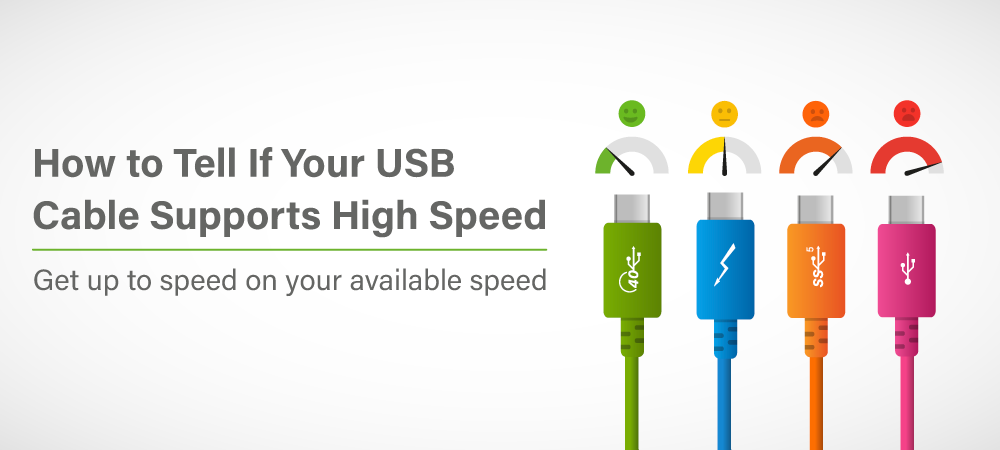
How to Tell If Your USB Cable Supports High Speed
One great thing about USB technologies is that they're always getting faster. The original USB 1.0 topped out at a pokey 1.5 Mbps, while today's newest USB4 devices sport speeds of up to 40 Gbps!
To get your desired speeds from your USB devices, you'll need a USB connector cable that's rated for them. And even if you're cutting out the middleman by using a flash drive, it's still useful to know what you can learn about USB devices by looking at their markings and connectors. Read on to learn how to tell if your flash drive supports high speed data transfer.
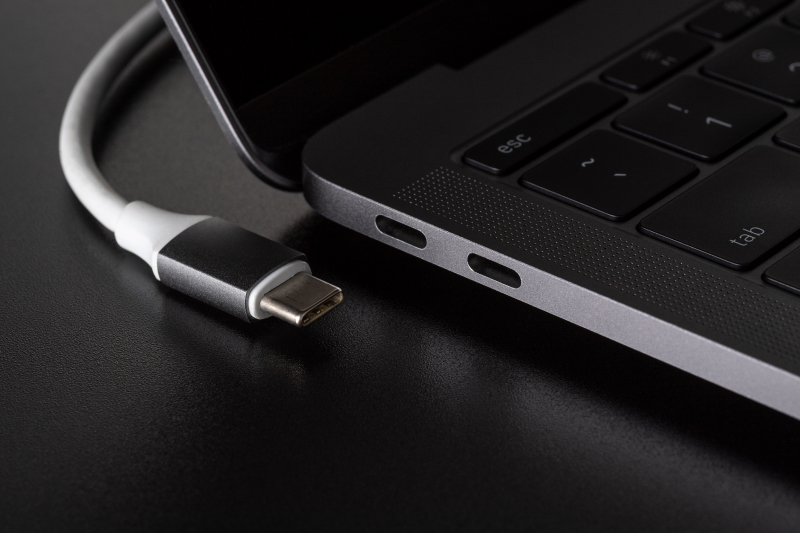
What Does 'High Speed' Mean in a USB Cable?
In any chain of devices connected via USB, data can only move as quickly as the slowest part of the chain allows. That's good in general because it makes newer USB devices backward compatible with older ones. However, it also requires knowing the speed specs of all your USB components if you want to optimize the speed of your data transfers.
This principle applies to all kinds of devices, including USB cards and standard drives, but it becomes especially important when choosing cables. The physical design of a cable affects how fast it can transfer data and what USB standards it's compatible with.
The cable's design also affects charging speed when the cable is used to charge a device. This guide focuses on data speeds because, well, we're data people! However, you can read up on the USB Power Delivery standard to learn about the differences between charging speeds in USB cables.
What counts as a "high speed" for you depends entirely on your needs. Someone using a cable for everyday office tasks may be perfectly fine with a basic 5 Gbps USB cable (and hence might not even notice the difference between USB 2.0 and USB 3.0). A professional photographer or CAD drafter, on the other hand, might really need a cable with 10, 20 or even 40 Gbps (all of which are available).
First, Read the Manual
The most preferable and reliable way to check a USB cable's speed is to read its specs. Examine any manuals or cards that came with the cable, or check its product listing if you ordered it online. Ideally, the cable's manufacturer should list its USB protocol, such as USB 3.0, as well as its speed in Gbps or Mbps.
Of course, documentation might sometimes not be easily available if you're using a cable from your box of cords (yeah, we have those, too) or that you've borrowed from a friend. In that case, can you simply plug a USB cable into your computer to examine its specs, the way it's possible to determine flash drive sizes? Unfortunately, the answer is no -- but there are some other clues you can look for to determine whether your USB cable can meet your need for speed.
So Fast, So Affordable -- Browse Our Custom Flash Drives Now
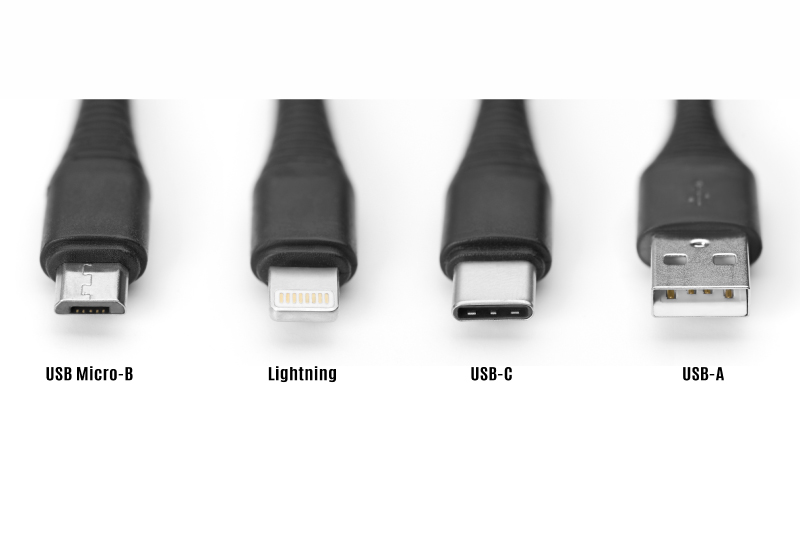
Understanding Connector Types
Looking at the connector (the physical "plug" on your USB cable) can sometimes give you a ballpark estimate of speed. Two kinds of connectors are most common today: the classic rectangular USB-A and the newer, slimmer USB-C. Cables with the slim USB-C connectors tend to offer faster speeds, but it all depends on the individual cable, and many cables today have one of each connector.
USB-A maxes out at 10 Gbps, although many cables will be slower than that. USB-C cables can hit up to 40 Gbps, but again, not all are designed to hit these blazing top speeds. Since the connection moves at the speed of the slowest element, a cable with both USB-C and USB-A connectors will be limited to USB-A speeds.
Understanding USB Standards
As we mentioned previously, most manufacturers will list a USB cable's compatible USB standards in its product description or documentation. In many cases, the cable will also have a logo near its connectors that shows its fastest compatible standard.
Read our guide to USB standards to understand how USB generations work -- it's a little too complex to delve into fully here. What you need to know right now is the maximum speed that each different USB generation offers, and what logos you should look for on a USB cable to find out which standards it supports.
Luckily, we created just such a chart for you:
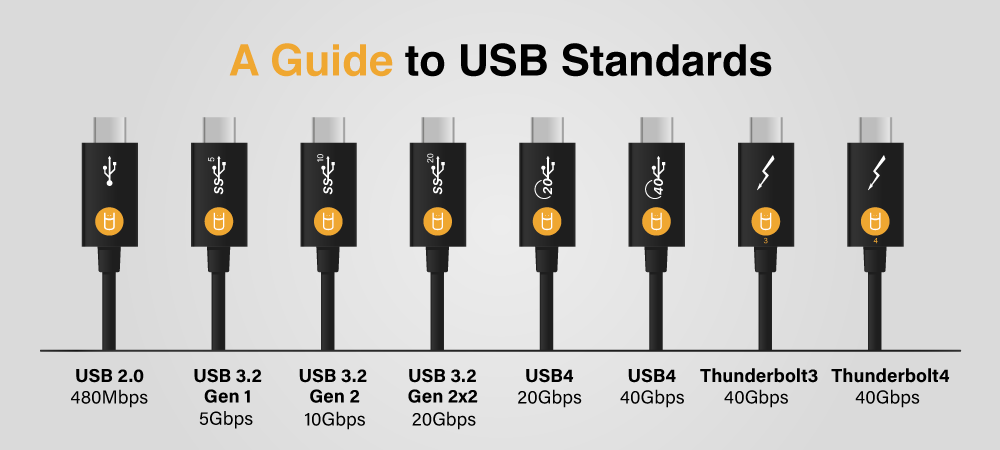
You'll notice this chart also includes Thunderbolt standards. This is another common high-speed data transfer standard that you'll find on devices like high-end laptops. For more information, see our guide to Thunderbolt vs. USB-C.
Save on Bulk USB Drives for Your Office and Home
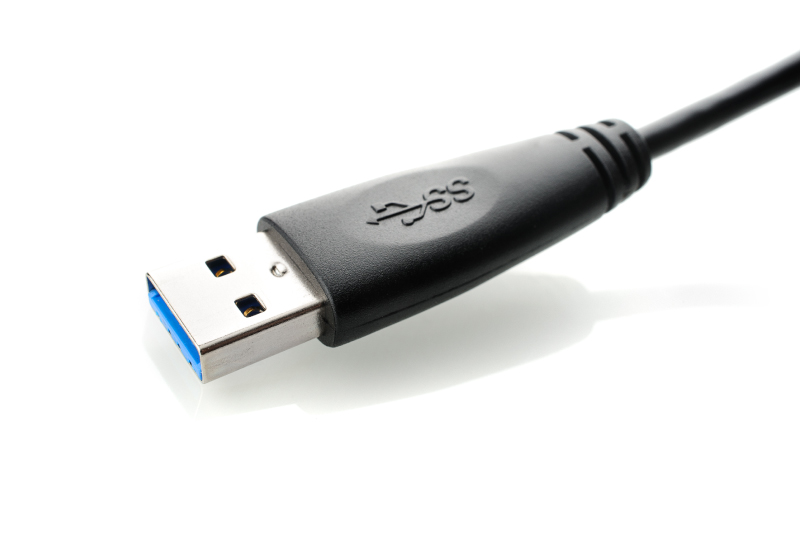
USB Memory Direct is your one-stop source for custom USB drives. We offer fully custom designs, a huge range of bulk USB drives and, of course, industry leading prices! Check out our top USB drive designs to get the inspiration flowing or get a quote for your custom drives now.